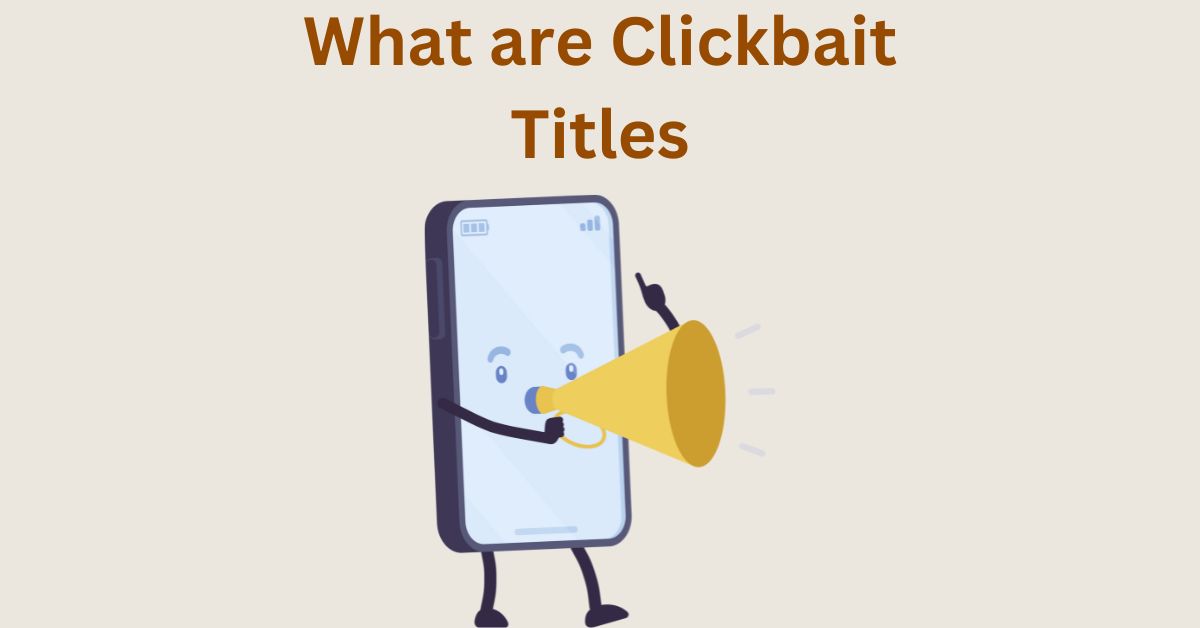Clickbait Titles and Headlines – Definition, Examples, How to Write and Some Tips
Estimated reading time: 4 minutes
Last updated on March 22nd, 2024 at 05:30 am
Do you want to know “What are Clickbait Titles and Does it Actually Work”?
Think of clickbait titles as flashy headlines that promise something exciting or shocking.
They’re like the movie trailers that make you go, “I need to see this!” But sometimes, the reality doesn’t match the hype.
Clickbait titles aim to grab your attention and make you click on a link, often by being a bit exaggerated or sensational.
Well, they might grab your attention, but do they deliver what they promise?
Studies show that about 59% of people who share articles on social media haven’t actually read them.
Clickbait can get people to click, but it doesn’t necessarily mean they’ll stay or find what they expected.
In the long run, it can harm a website’s credibility.
Let’s talk in detail.
What is Clickbait: How It’s Different?
Imagine you see a fancy pizza ad with a headline like “The World’s Most Amazing Pizza!”
You order it, and it turns out to be just an ordinary pizza.
That’s a bit like clickbait online.
Clickbait uses catchy headlines to grab your attention, but the content often doesn’t live up to the hype.
About 92% of people say they’d lose trust in a brand after being deceived by clickbait.
So, it’s like a flashy ad that promises a lot but delivers very little.
Examples of Clickbait: Spotting Common Tricks
Think of clickbait like a magician’s trick.
They show you something amazing, but it’s not always what it seems. Clickbait does the same.
You might see headlines like “Shocking Secrets Revealed!” or “You Won’t Believe What Happened Next!”
These are classic clickbait moves.
Around 75% of users say they dislike clickbait, so it’s important to be cautious.
If a headline seems too sensational, it might just be trying to trick you into clicking.
Writing Clickbait: Making Titles Grab Attention
Imagine you’re at a bookstore, and you see a book with a title like “Unbelievable Stories You’ve Never Heard!”
It makes you curious, right? That’s the idea behind clickbait titles.
They want you to click and read. But here’s the catch: clickbait often sacrifices accuracy for attention.
While catchy titles can be good, it’s important to keep things truthful.
About 56% of users find clickbait annoying, so finding the right balance between attention-grabbing and honesty is key.
Clickbait’s Impact: Why It Works and Its Downsides
Imagine a flashy billboard promising a free trip to space if you call a number.
It grabs attention, right? Clickbait works similarly online.
It grabs your interest with sensational promises.
About 90% of people admit to clicking on clickbait, but here’s the catch: while it gets clicks, it often leaves users disappointed.
Around 82% of users feel deceived by clickbait, highlighting its downside.
Navigating Clickbait vs. Genuine Content
Think of navigating clickbait like distinguishing between a real treasure map and a fake one.
Clickbait might lead you on an exciting journey, but it often ends with disappointment.
Genuine content, on the other hand, delivers what it promises. It’s like finding the real treasure.
By being cautious and checking sources, you can avoid falling for clickbait.
Only 26% of users trust content they find on social media, emphasizing the need to verify information.
Tips for Good Headlines: Balancing Engagement
Imagine a store with a sign saying “Amazing Discounts Today!” That’s engaging, right?
Crafting a good headline is like that – it grabs attention.
But just like the store must deliver on its promise, your content should match the headline.
Balancing engagement means creating intriguing titles without misleading them.
About 36% of readers prefer headlines that clearly represent the content.
So, striking the right balance ensures your headlines are both attractive and honest.
Why We Click: The Psychology Behind Clickbait
Imagine you’re passing a street performer who’s doing something incredible. You stop to watch, right?
Clickbait plays on the same psychology. It triggers our curiosity and desire for novelty.
The fear of missing out (FOMO) is powerful. In fact, 69% of people admit to clicking on a headline out of curiosity.
Understanding this psychology helps us make more informed choices online.
So, while clickbait may play on our instincts, being aware of the psychology behind it helps us click wisely.
Wrapping Up – What are Clickbait Titles
Clickbait titles are those catchy and exciting headlines you often see online that make you want to click on them.
But, the big question is, do they really work?
Well, they might get you to click at first, but the content behind those flashy titles is often not as good as promised.
In the long run, using clickbait can actually make people trust you less and not want to engage with your content.
So, it’s better to focus on creating honest and helpful content to build a real connection with your audience.
